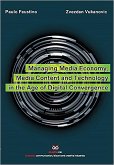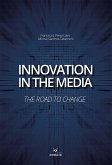This book deals with the Internet’s influence on television. The traditional value chain has been transformed, giving rise to new forms of television that foster user generated content. We no longer dream about interactivity, but participation. Accordingly, the “digital natives” like to tag programs and films in the cyberspace, each conveniently tagged so that other users can find it. Although many questions have yet to be answered, this decade’s motto may be “the tag is the medium”. However, on-demand television is unlikely to replace mass TV. The Web 2.0 has brought an end to the “my TV” concept of the dotcom age and may put “our TV” in its place.
These changes pose serious problems. The industry is facing the real threat of revenue cannibalization because current online business models are not financially rewarding. The Internet is not yet a profitable market for programs that require additional revenues to advertising. To date, the box office, video and premium television have been the main sources of revenue of the audiovisual industry. This book explores the factors at play in this shift.
These changes pose serious problems. The industry is facing the real threat of revenue cannibalization because current online business models are not financially rewarding. The Internet is not yet a profitable market for programs that require additional revenues to advertising. To date, the box office, video and premium television have been the main sources of revenue of the audiovisual industry. This book explores the factors at play in this shift.









